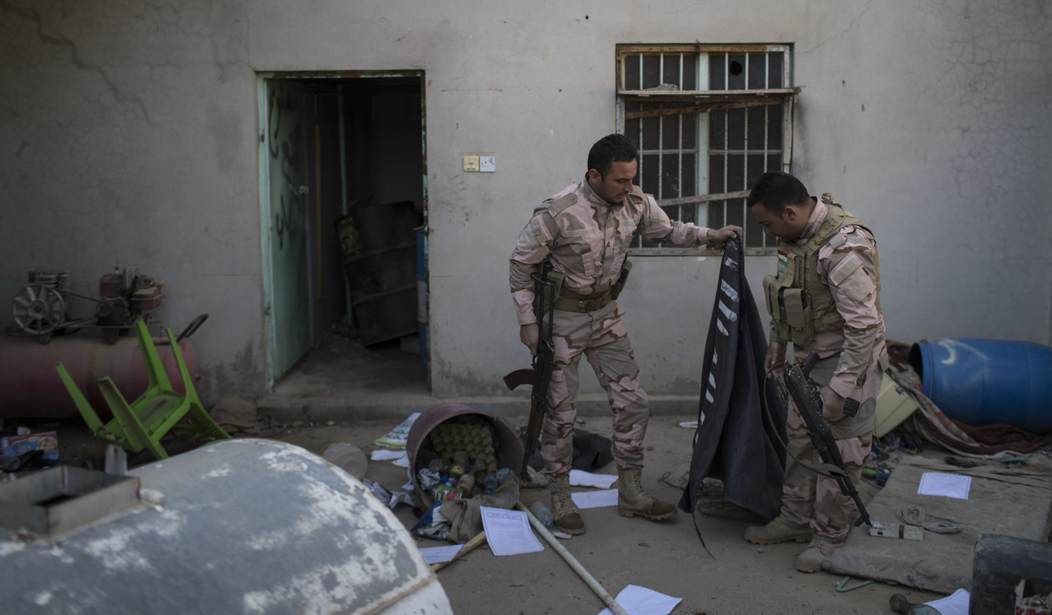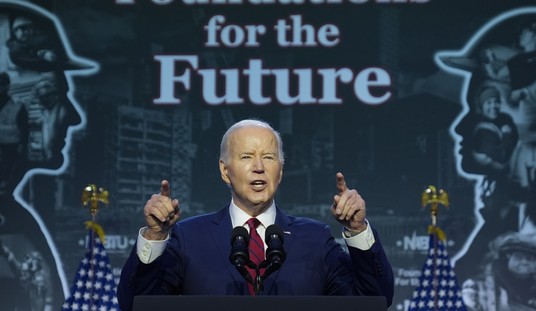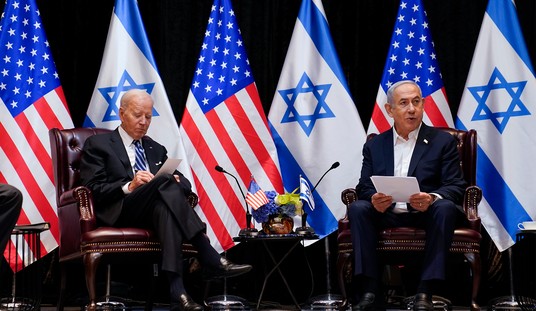Despite Iraqi reports that they had the leader of ISIS cornered and trapped in Mosul, the spokesman for U.S. operations in Iraq and Syria said Abu Bakr al-Baghdadi’s whereabouts are unknown.
British Foreign Secretary Boris Johnson told members of parliament on Thursday that “some of the intelligence we have suggests he had himself vacated the scene himself and is yet using internet media to encourage others to take part in violence.”
That came in the form of Baghdadi’s first audio message since December, released Wednesday by ISIS’ al-Furqan media, in which he told “soldiers of the caliphate” to “be patient, stand firm against the U.S. Air Force and allies — they will be defeated” and admonished jihadists to “hold the ground” and “don’t fight among yourselves.”
Col. John Dorrian, spokesman for Operation Inherent Resolve, told reporters Thursday via video from Baghdad that ISIS has “very limited freedom of movement” from west Mosul along their supply lines to Raqqa and back, noting “they don’t have the ability to move in large columns.” But the western flank is still open.
Dorrian said the Pentagon hadn’t verified the authenticity of Baghdadi’s half-hour message, which was audio only. “But it is quite clearly an effort on the part of Daesh to communicate to their fighters. And this is probably excellent evidence that their command and control and ability to communicate directly with their fighters and control them has been severely reduced,” he said.
“So there are some indications inside Mosul that there are people that are abandoning their posts or trying to get away. We have seen reports that Daesh had executed people who do that and that you know, one of the interesting things that we’ve seen in this English translation of this is that Baghdadi is saying, don’t fight amongst yourselves,” Dorrian continued.
“This is the type of thing that a leader who’s losing command and control and ability to keep everybody on the same page says. We don’t believe that it’s going to work. We don’t know — again, we don’t know if it’s him. But you know, Daesh has a long track record, more than a year, they’ve been going backwards, losing territory. They’ve had a number of fighters very near to Baghdadi that have been killed in targeted strikes.”
Asked if the U.S. knows where Baghdadi is, the spokesman replied, “If we knew where he was he would be killed at once. So we don’t know where he is.”
Dorrian reported “a reduced ability to maintain the tempo of propaganda that we saw early in their campaign.”
In August last year, he said, ISIS “released more than 700 items from their official outlets.”
“In August of 2016, after having lost a considerable amount of territory and a year of air strikes, that number declined to under 200 items,” he said.
PJM has noticed social media crackdowns since the beginning of the battle for Mosul that have limited the amount of ISIS material being disseminated, though they still issue a daily news report, a weekly newsletter, a monthly magazine, regular videos and more. Most of the material has focused around reporting on the Mosul battle, with ISIS’ Amaq agency regularly making exaggerated claims about the terror group’s wins.
The White House said it was “aware” of the Baghdadi “but no propaganda can change the reality that week after week, ISIL continues to lose ground.”
“The coalition amassed by the United States has put these terrorists on a path to lasting defeat,” declared spokesman Eric Schultz aboard Air Force One en route to a President Obama campaign stop Thursday, adding that Baghdadi is “in hiding, unable to show his face in public.”
“I would say that part of the coalition’s strategy — a chief part of the coalition’s strategy has been taking out ISIL’s leadership. That includes the chief operations strategist, the ministers of war, interior, finance, and oil and gas,” Schultz said. “But that doesn’t mean we have to stop being vigilant or determined. The U.S. will continue to lead the coalition of 67 members to keep pressure on ISIL until they are ultimately defeated.”
Asked where Baghdadi is, Schultz said, “You might want to check in with the intelligence community.”
State Department spokesman Mark Toner said officials “don’t have any reason to doubt that it isn’t” Baghdadi on the tape.
“He made a lot of comments or statements about the state of things, or how he’d like to see them. But look, I’d just say no audiotape can change the reality of what’s happening on the ground in Mosul currently, and also can change our determination to continue with the operations that are currently underway to destroy and degrade Daesh in both Iraq and Syria,” Toner said. “We’ve made tremendous gains over the past year. We’re on the verge of liberating Mosul. That’s not to say we’re there yet, but we’re making progress. We’re talking about Raqqa next, and that’s the – what ISIL purports to be the seat of its caliphate. We’re going to keep the pressure on them, and no audiotape’s going to change that.”
Baghdadi encouraged attacks in Saudi Arabia and Turkey, and told would-be jihadists to think about going to ISIS provinces, including Afghanistan, the Caucasus, Indonesia, Philippines, Sinai, Bangladesh, West Africa and North Africa, what he described as the “base of the caliphate.”
An ISIS e-book published several months after the founding of the Islamic State said Baghdadi hides in plain sight by dressing like a regular jihadist in public. It said he’s paranoid about carrying a cell phone or using electronic communications, and “always cautiously on the move for security reasons… hiding is comfortably possible compared to Osama bin Laden who had less security, more spies against him and less places to hide.”
“Unlike the medieval times when a king was safe in a guarded castle, leaders today cannot have one central location. Khalifah Ibrahim is always on the move in a convoy of cars, with loyal bodyguards who he knows since the American invasion in the mid 2000s,” the book said. “The secret is not to have too much cars which will give the impression (to local people and even drones) that an important person is in one of the cars. But not to have too less cars either, in case of ambush.”








Join the conversation as a VIP Member